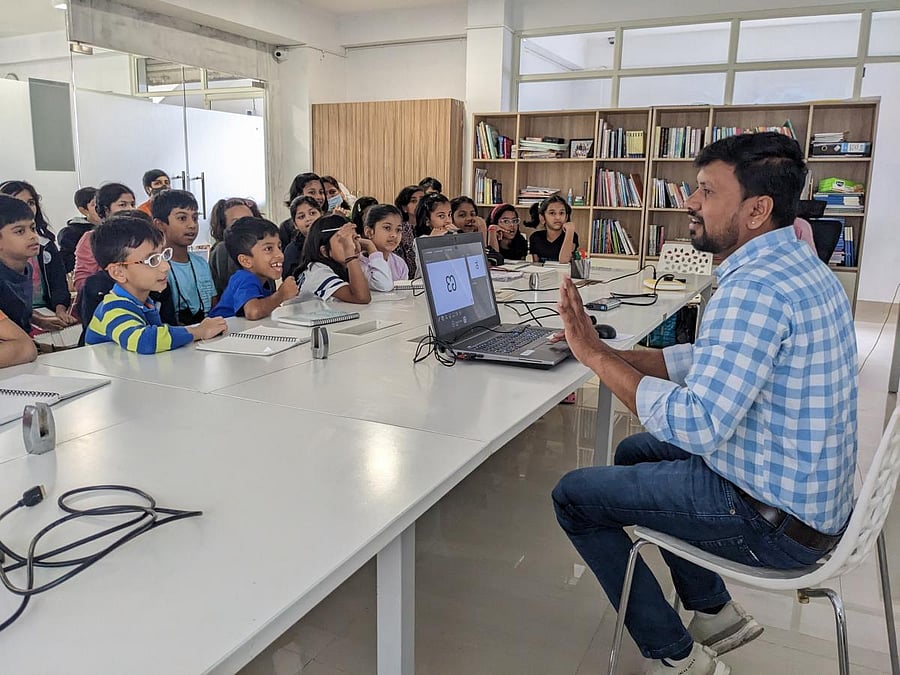

We had seen these (inscription) stones at the temple before, but I thought they were in a different language. I did not even know there were old Kannada letters,” says a fifth grader from a school in HSR Layout, Bengaluru. Following a session with Mythic Society at her school, she and her younger sister were elated to be able to identify Kannada letters in these inscriptions the next time they visited.
Bengaluru is home to over 175 inscriptions which detail important pieces of the city’s history. With their origins between the 5th and the 16th century, the city’s inscription stones record the writing styles of different time periods. The inscriptions document the origin of various neighbourhoods, and the history of temples and other monuments.
In an effort to introduce more young people to these historical artefacts, the Bengaluru-based Mythic Society, an Indic studies institution, has developed a resource to analyse and interpret the writing on these inscriptions. The team creates 3D models of the inscriptions and derives a character set from these. Compiled in a free e-book titled “Akshara Bandara (Part 1)” are high-resolution images of the various alphabets and characters.
“Traditionally, this data, especially in such a vast amount, has not been available to people,” says P L Udaya Kumar, a heritage conservationist who is leading the project. By documenting the various characters found in 20-odd inscriptions, the initiative is making the knowledge of their neighbourhoods and city more accessible to Bengaluru residents.
This book, which was launched on February 3, includes a character set for Kannada inscriptions dated between 1300 and 1400. This time period was chosen as the highest number of stones date back to that era, explains Kumar.
Student interest
The e-book is targeted to cater to children above the age of 10 years. “While the subject is meant to be scholarly, we launched the book in a school, with an interactive session with the students,” he adds. As part of the launch, the team followed up the presentation with a visit to a local temple that housed some inscriptions.
The session was received with great interest by the students. Organisers and teachers alike were surprised by the children’s ease in understanding the link between characters. “When I sat in on the session, it was a surprise for me, to see how much the children were able to relate and identify the old Kannada letter. They were excited to be able to decode what they were seeing for the first time,” says a teacher from the school.
Students were also fascinated to see the 3D models of the inscription stones. “The session was interesting, because we were able to see some similarities and some differences between old Kannada letters and what we study now,” the student adds.
“Children are very good at identifying the similarities and decoding the characters as they approach the activity with an open and inquisitive mind,” says Kumar.
The e-book can be downloaded for free at bit.ly/aksharabhandara1.